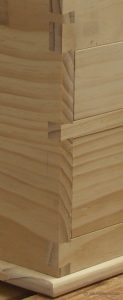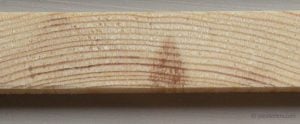Questions answered #1
Q:
Hi Paul,
I really like that chest and look forward to reading about your next piece in detail.
I make all my workshop tables from either Douglas Fir or White Pine from Home Depot. Unfortunately, HD never labels it as anything but just pine. How critical is the exact type of pine? All I can tell is that it’s neither long-leaf nor southern yellow pine.
I am quite intrigued by your comment about workbenches traditionally being made from pine. I can get Douglas Fir or the anonymous white pine but I have a feeling that pine is a better choice as it is soft and splinter free. Any advice on the choice you would make?
Thanks!
A:
You are right, pines vary greatly and the same species will be different depending on where they grow, how high (or low) and elevation they grow at, how dense the forest they are in and so on. On the tool chest in one of the blogs there the annual rings are 1/2″ apart and when you work this pine there is only minimal variance in hardness between the two aspects of the growth (annual) ring.


I just received an email from someone in Sweden who said he agreed on the pine benches and had a very old one of his grandfather’s shop that was made from good heart pine. I haven’t found that hard pine is essential. The advantage of pine for benches is it absorbs the blows and so cushions and supports the workpiece. I have made them from Southern Yellow and Ponderosa, Douglas fir and Oregon pine all with success. I quite like spruce and most often used 2×4 SP&F studs ripped to 3″ for bench tops, legs and aprons with the best success of all. Benches I made 18 years ago are still in full service today with no degrade at all and they are used 6 days a week full time. Very stable, once laminated, these benches needed only very minimal surface flattening after six months acclimating in the shop.


I made a bench recently out of some sort of white wood I presume came from the Western US. Perhaps spruce. Anyway, it was kiln dried and the knots were so hard they shattered like glass when I planed it. I put on safety glasses for protection. Other than that, it was fine, but I was really wishing I had looked harder for air-dried southern yellow pine. I had a yellow pine bench before and loved it. It is a wonderful wood for workbenches in my opinion.
Luke, the secret to spruce and its hard, hard nots is an ultra sharp plane iron and repeated sharpenings in quick succession using a softer (and marginally more malleable; usually the one that came with the the plane) iron that’s is very finely set.
Yellow pine works well for benches too. I have used that when in the USA. It does have a tendency to ‘crawl a little at first but then it settles down.
Best for now,
Paul